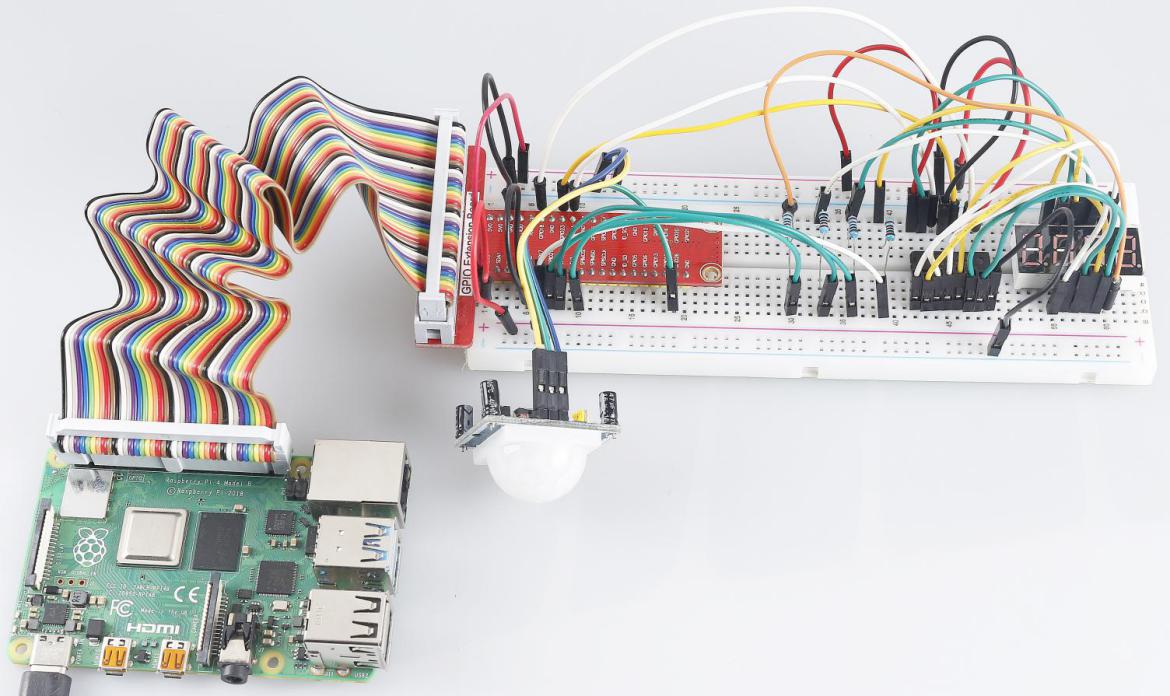3.1.1 Counting Device¶
Introduction¶
Here we will make a number-displaying counter system, consisting of a PIR sensor and a 4-digit segment display. When the PIR detects that someone is passing by, the number on the 4-digit segment display will add 1. You can use this counter to count the number of people walking through the passageway.
Required Components¶
In this project, we need the following components.
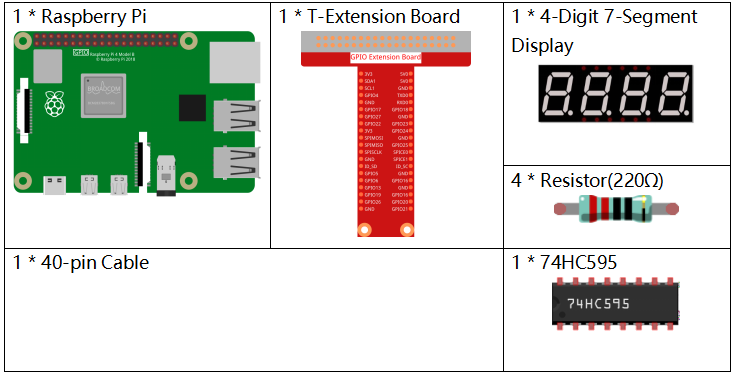
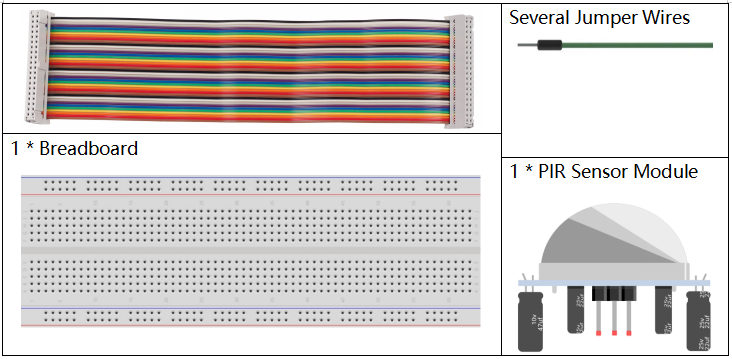
It’s definitely convenient to buy a whole kit, here’s the link:
Name |
ITEMS IN THIS KIT |
LINK |
|---|---|---|
Raphael Kit |
337 |
You can also buy them separately from the links below.
COMPONENT INTRODUCTION |
PURCHASE LINK |
|---|---|
- |
|
- |
Schematic Diagram¶
T-Board Name |
physical |
wiringPi |
BCM |
GPIO17 |
Pin 11 |
0 |
17 |
GPIO27 |
Pin 13 |
2 |
27 |
GPIO22 |
Pin 15 |
3 |
22 |
SPIMOSI |
Pin 19 |
12 |
10 |
GPIO18 |
Pin 12 |
1 |
18 |
GPIO23 |
Pin 16 |
4 |
23 |
GPIO24 |
Pin 18 |
5 |
24 |
GPIO26 |
Pin 37 |
25 |
26 |
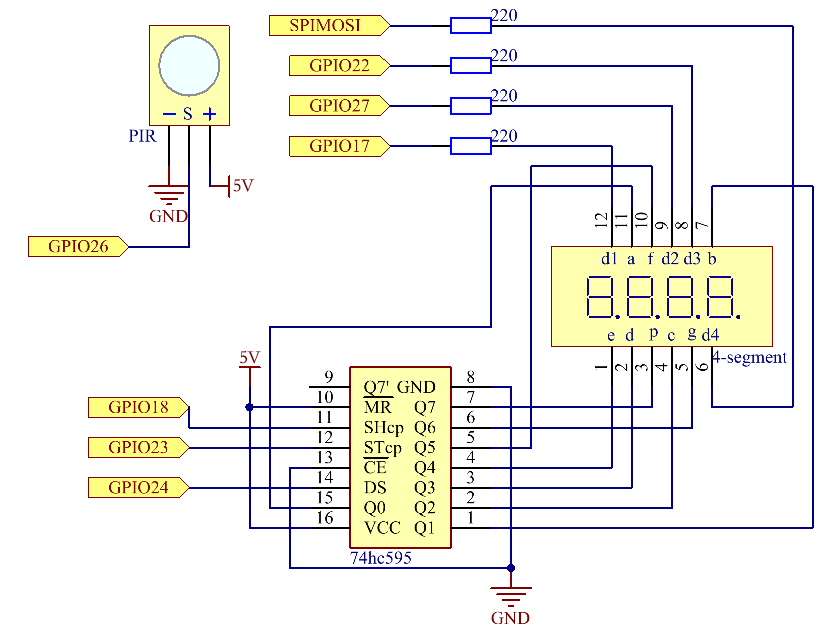
Experimental Procedures¶
Step 1: Build the circuit.
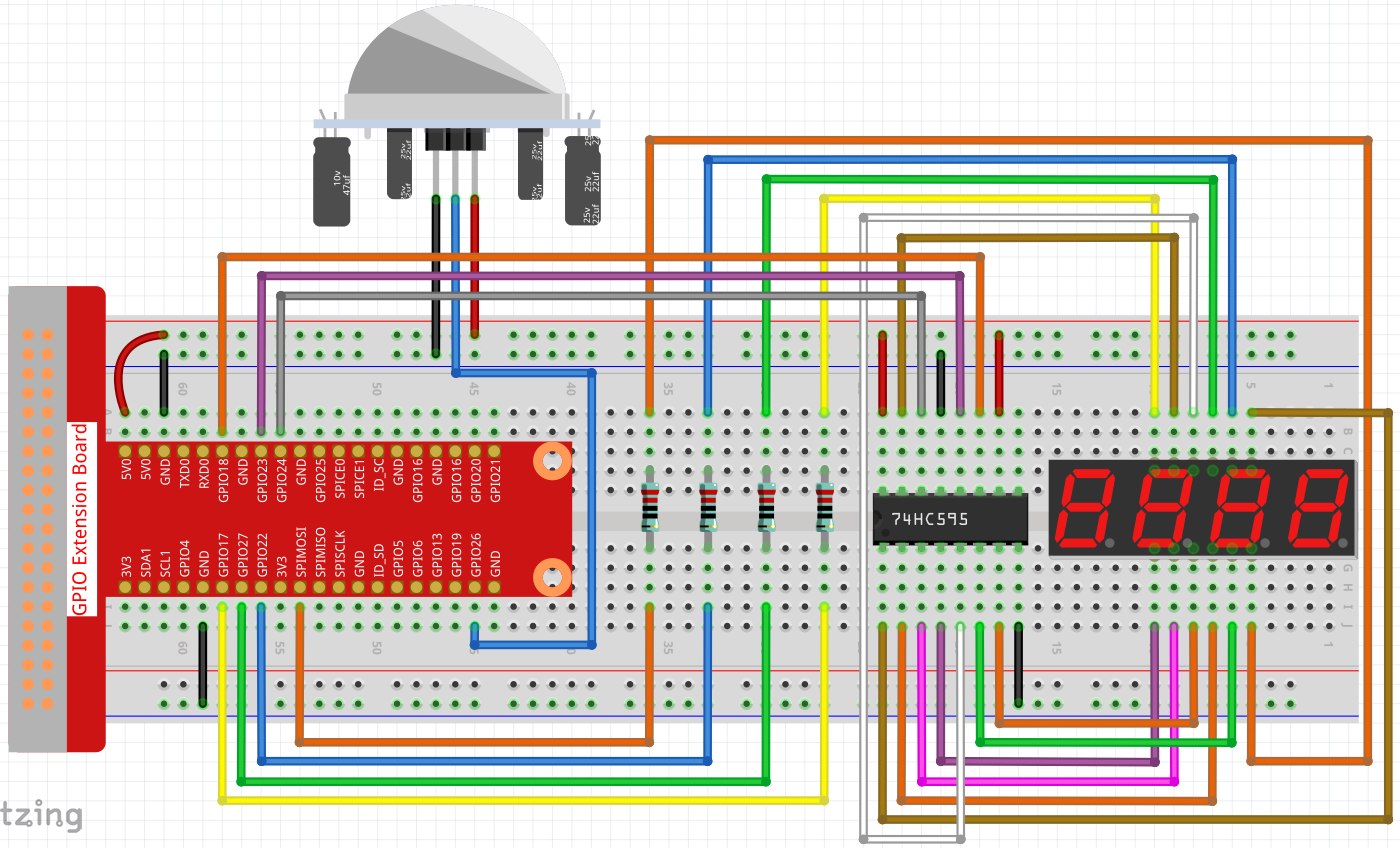
Step 2: Go to the folder of the code.
cd ~/raphael-kit/c/3.1.1/
Step 3: Compile the code.
gcc 3.1.1_CountingDevice.c -lwiringPi
Step 4: Run the executable file.
sudo ./a.out
After the code runs, when the PIR detects that someone is passing by, the number on the 4-digit segment display will add 1.
There are two potentiometers on the PIR module: one is to adjust sensitivity and the other is to adjust the detection distance. To make the PIR module work better, you You need to turn both of them counterclockwise to the end.
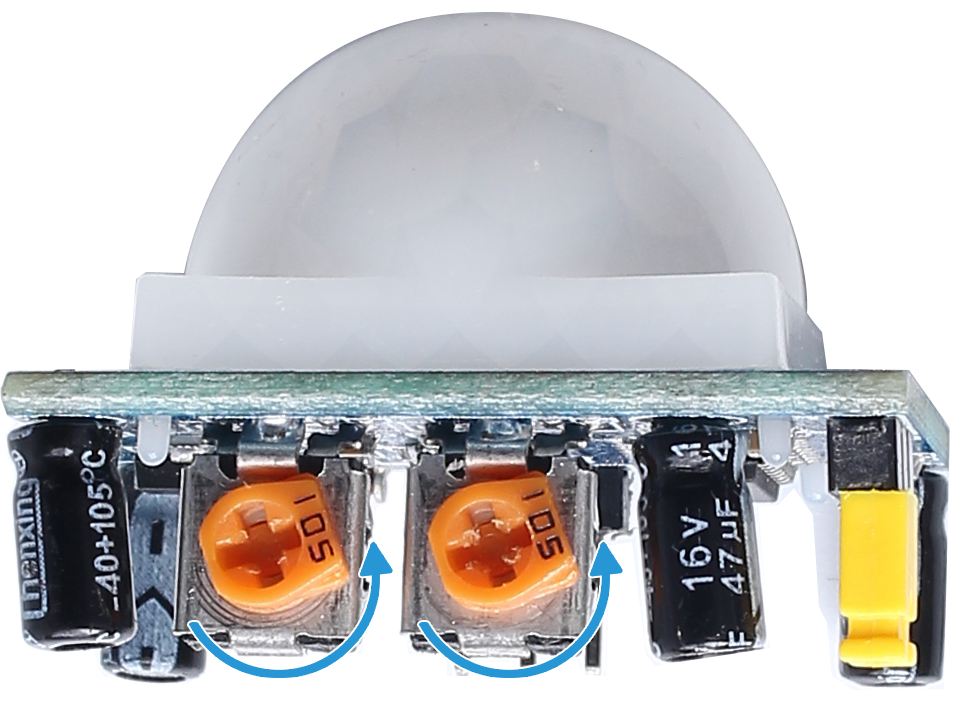
Note
If it does not work after running, or there is an error prompt: "wiringPi.h: No such file or directory", please refer to Install and Check the WiringPi.
Code Explanation
void display()
{
clearDisplay();
pickDigit(0);
hc595_shift(number[counter % 10]);
clearDisplay();
pickDigit(1);
hc595_shift(number[counter % 100 / 10]);
clearDisplay();
pickDigit(2);
hc595_shift(number[counter % 1000 / 100]);
clearDisplay();
pickDigit(3);
hc595_shift(number[counter % 10000 / 1000]);
}
First, start the fourth segment display, write the single-digit number. Then start the third segment display, and type in the tens digit; after that, start the second and the first segment display respectively, and write the hundreds and thousands digits respectively. Because the refreshing speed is very fast, we see a complete four-digit display.
void loop(){
int currentState =0;
int lastState=0;
while(1){
display();
currentState=digitalRead(sensorPin);
if((currentState==0)&&(lastState==1)){
counter +=1;
}
lastState=currentState;
}
}
This is the main function: display the number on the 4-digit segment display and read the PIR value. When the PIR detects that someone is passing by, the number on the 4-digit segment display will add 1.
Phenomenon Picture¶
